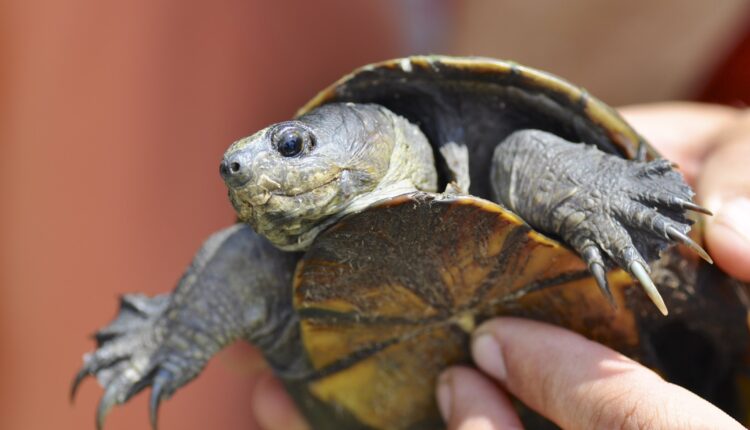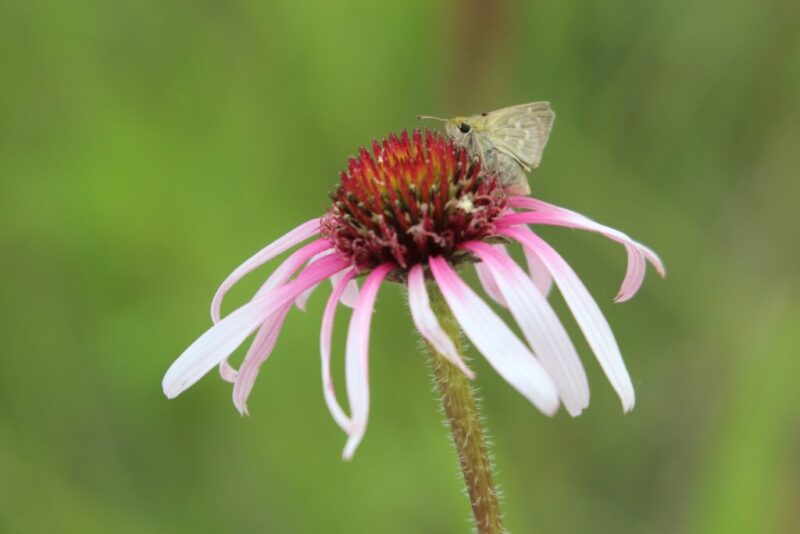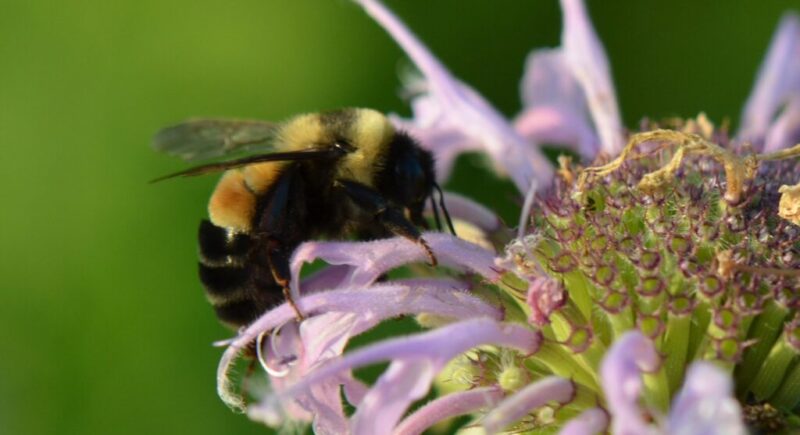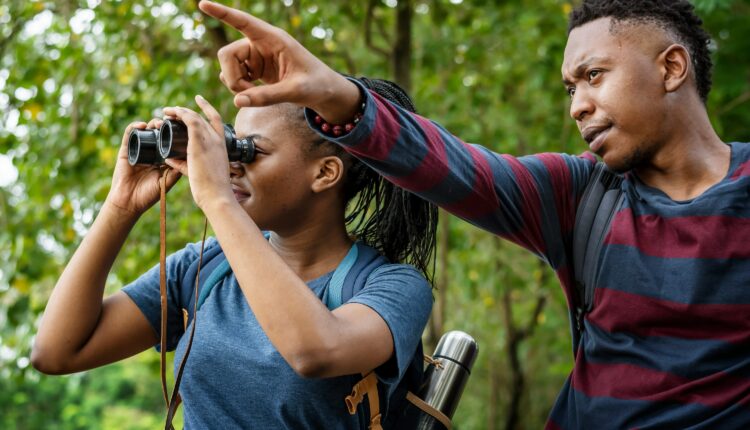
Photo courtesy of Eric Osmundson/CC BY-NC-SA 2.0.
Learn more about 12 endangered species in Iowa and what you can do to help protect them.
Iowa is home to a wonderful abundance of wildlife. However, the land covering the state has changed greatly since Iowa became a state in 1846. Native prairie, once plentiful and spreading wildly across the state, now makes up just one percent of Iowa’s landscape. The state’s natural wetlands have mostly been drained. And there are nearly half as many woodland acres as there once were. This, along with growing cities and row crop farming, has contributed to some of Iowa’s wildlife being added to the endangered species list.
Iowa’s endangered and threatened species law was enacted in 1975. Animals (including fish and plant life) placed on the endangered species list are in danger of extinction throughout all or a significant part of their range and are protected by law. Currently, about 47 mammals, birds, reptiles, amphibians, insects, and fish are listed on the endangered species list. In addition, nine species are considered federally endangered.
Read on to learn a little more about these precious endangered species in Iowa and what you can do to help protect them. Also, if you are able to see any of these creatures in the wild, try to snap a picture and share it with the Iowa Department of Natural Resources.
1. Indiana Bat
This bat is quite small, weighing in at just .2 ounces and measuring only about five or six inches in length. They are migratory bats that hibernate in caves in mines during cold weather months—clustering in groups of as many as 500 bats per square foot. While it was first discovered in Indiana, hence its name, it lives in the eastern half of the United States, including in Iowa. Its signature characteristic is small, mouse-like ears.
They are also very social bats, living in colonies during summer and winter. They need to live in forests as they forage for meals and raise their pups. Females will return to the same colony every summer. Threats to the Indiana bat include human disturbances during hibernation, commercial use of caves for recreation, loss of summer habitat, pesticides and other chemicals, and white-nose syndrome (which impacts many bat species).
2. Plains Pocket Mouse
Just as its name states, this little creature—coming in at about five inches long, half of which is its tail—calls the plains home. Prairie areas with sandy soil are ideal as they dig burrows to live in. They also like to take dust baths to help prevent parasites and to keep them cool in the hot summer sun. The fur is actually quite soft and silky.
Their range is large, spanning from Minnesota and the Dakotas all the way down to Mexico. But they are still on the endangered species list, as urban expansion has dramatically decreased their habitat.
3. Spotted Skunk
Most people hear about skunks and want to run the other way. But it’s important to know the spotted skunk is on the endangered species list.
Striped skunks are the ones most commonly seen. They live in rocky savanna habitats but can also be found in old abandoned corn cribs and other uninhabited farm buildings. They use these places to create their dens and to find protection.
The coats of a spotted skunk are very fancy and are, in fact, black and white spotted. They also have a fluffy white tail. But even more surprising than their appearance is the fact that they will stomp their feet and do a handstand when in perceived danger. Spotted skunk mothers even teach their babies by practicing this with them. But if, when threatened, the prey doesn’t back off, then it will spray its signature skunky stench.

Photo courtesy of vladeb/CC BY-ND 2.0.
4. Piping Plover
This plump, sparrow-sized bird is the most endangered bird in Iowa. Estimates are that there are only about 6,000 piping plovers left in the US today. If you do see them, they are often along the Missouri River, on the high, dry side of beaches along Iowa waterways.
They are quite vocal, with a two-parted whistle that drops in pitch. Their coloring is compared to that of dried sand (making them very hard to spot on the beaches where they hang out), but when they are mature enough to breed, they will sport a thin black collar (thicker on males) across their chest and a black stripe across their forehead. They also have orange legs and an orange bill with a black tip.
Humans’ disruption of their nesting sites is thought to be the only cause of the piping plover’s endangered status.

Photo courtesy of Ray Hennessy/Unsplash.
5. Barn Owl
You would think that in an agriculture-rich state like Iowa, the barn owl would remain safe. But it has been on the endangered species list since 1977.
This majestic bird of prey loves to nest in old tree cavities, but much of the old-growth forest in Iowa has been cut down for farming. They can also be found in abandoned farmhouses, barns, and churches.
You won’t identify this owl by its hoot, because it doesn’t make that sound. It hisses and shrieks to communicate as it needs. But they are known as the ghost owl because they are white on their bellies. They also have a distinct heart-shaped face. They are typically between 14 and 16 inches tall and have a three-and-a-half-foot wingspan.
Iowa began a barn owl nesting box program in 1983 to help protect the species and has since seen more than 130 young produced. You can find directions online to create your own owl nesting box to help protect the barn owl.

Photo courtesy of Doug Swinson/Unsplash.
6. Lake Sturgeon
Iowa anglers can tell you when a fish is rare. The lake sturgeon is one of those rare fish in Iowa. Only found in the Mississippi River, where they remain hard to catch, they are endangered because their abundance has decreased since 1900. This is mainly due to over-harvesting, pollution, and dam construction, which inhibits the fish’s 100-mile upstream migration for spawning.
Lake sturgeons are bottom dwellers, preferring the darker, quieter waters in large rivers. If you do see one, you’ll know the lake sturgeon by its tan coloring (young fish) or its slate gray coloring (older fish). They also have five longitudinal rows of heavy, bony plates. They have rounded heads, and their mouths are almost sucker-shaped, which helps them feed by taste.

Photo courtesy of USFWS Mountain-Prairie/CC BY 2.0.
7. Western Hognose Snake
There are about 30 species of snakes in Iowa, but the Western Hognose Snake is one that makes the endangered species list. This snake, usually about 15 to 25 inches long, is brown or tan with darker blotches on its back and sides. Its belly is mostly black, which differentiates it from the Eastern Hognose Snake, which has a light-colored belly. This snake gets its name from the upturned scale on the end of its nose, which makes it look like the nose of a pig.
They prefer to live in large areas of sand prairies and sand dunes, and their numbers have declined as those habitats have disappeared or their large open spaces have been fragmented by roads that they are then forced to cross, sometimes unsuccessfully. They are not venomous.
8. Yellow Mud Turtle
Sometimes mistaken for box turtles, the yellow mud turtle ironically does not have the yellow markings you’d notice on other species. These are small turtles, with adults being only about five inches long. Their shell is darn with no markings and is rather flat and oblong-shaped. Only the bottom of the turtle’s shell is a light yellow color.
They make their homes in marshes, ponds, and other shallow bodies of water. They need sandy terrain near the water so that they can bury themselves in it. They have the shortest feeding period of any North American turtle, emerging from spring only through July, when they begin the process of burying themselves until the following spring.
In Iowa, yellow mud turtles are only found in a few scattered populations along the Mississippi Alluvial Plain in Eastern Iowa.
9. Great Plains Skink
With a name like the Great Plains Skink, it makes sense this creature would call part of Iowa home. But today, it can only be found in the southwestern-most corner of the state, in the Loess Hills.
The Great Plains skink is about 14 inches in length (the largest in the eastern and central US) and has a tan body with dark markings. Certain specimens also have a bright blue tail. It is a grassland-loving lizard and is quite picky about its habitat. It is known to move out of an area if it becomes too shady (they love to bask in the sun on top of rocks). These days, they often move into urban areas where they are likely to be accidentally killed.
It also has a super cool predator escape trick: If caught, it can detach its tail to escape, and it will later grow a new one.
10. Dakota Skipper
A big fan of the tallgrass prairie, the Dakota skipper was once abundant across Iowa and the great plains. Loss of 85 to 99 percent of its tallgrass prairie habitat led to its official placement on the endangered species list in 2014.
These butterflies are tiny, with just a one-inch wing span, but their dusty yellow, orange, and brown colors make them stand out among the grasses. State conservation efforts are partnering with individual landowners to help protect habitats, like bluestem and upland prairies, so that the Dakota skipper can have more spaces to fly and thrive.

Photo courtesy of USFWS Midwest Region.
11. Higgins’ Eye Pearlymussel
These unique creatures landed on the endangered species list in 1976—one of the first freshwater mussels to receive protection—and biologists and wildlife experts have been working to protect them ever since.
They only live in the upper Mississippi River north of Lock and Dam 9 at Keokuk. They like to dig into the mud at the bottom of large rivers. A large freshwater mussel, coming in at up to six inches long, the Higgins’ eye is oval or elliptical shaped. The hinged shell is usually yellow, greenish, reddish, or brown. Inside, you’ll see some iridescent coloring on the white shell.
The mussel itself seems like a pile of goo but is actually quite complex, with gills for breathing, a digestive track for processing food (they are some of the best water-purifying creatures), and a large, muscled foot for moving along or anchoring itself. Their biggest threat is the zebra mussel, an invasive species that first arrived in the US via large ships navigating Lake Erie in the 1980s.

Photo courtesy of USFWS Midwest Region.
12. Rusty patched bumble bee
There are 21 different species of bumble bee in the United States, but the rusty patched bumble bee has found itself on the endangered species list since 2017, when the population started a rapid decline for unknown reasons, although pesticides are suspected of playing a role. The rusty patched bumble bee can be found around a large portion of the country.
Here in Iowa, you might know you’ve spotted one by looking for its unique characteristic: a mostly yellow upper thorax with a black spot in a v-shape between its wings (it may look like a thumb tack). Rusty patched bumble bees start their annual life cycle with a solitary queen emerging from overwintering and beginning a colony. Workers are produced during the summer months and the cycle concludes with the production of males and the new queens emerging in late summer and early fall. Next time you see a big bumble bee buzzing around, see if it’s got that unique patch on its back.

Photo courtesy of USFWS Midwest Region/CC BY 2.0.
This article first appeared on Good Info News Wire and is republished here under a Creative Commons license.

Fall bird migrations in Iowa and where to spot them
Fall in Iowa is a birder's paradise, as bird migrations take over the skies. Find out what birds you can spot and when. There’s so much to look...

3 pets banned in Iowa (and 3 that surprisingly aren’t)
Iowans know that their state is home to beautiful natural surroundings and an abundance of wildlife. But what about wildlife at home? Which are the...

Report calls out 15 Iowa puppy mills for dog welfare violations
A new report highlights Iowa puppy mills with documented animal welfare violations. Fifteen Iowa dog breeding operations have been called out for...

12 animals that have been observed adopting animals from other species
As the duckling in Dr. Seuss' "Are You My Mother?" knows all too well, cross-species animal adoption is rare. It has occurred, though, in limited...

5 Things to Know About Adopting a Pet From a Shelter
Your local animal shelter has dozens of cats, dogs, rabbits, and other critters just waiting to find their forever home. Here are some tips to help...

It’s Hummingbird Season in Iowa! Here’s What to Know
It’s Hummingbird Week. What—never heard of it? Well, that’s probably because we just made it up. Yep, turns out we’re big hummingbird people. We’ve...


